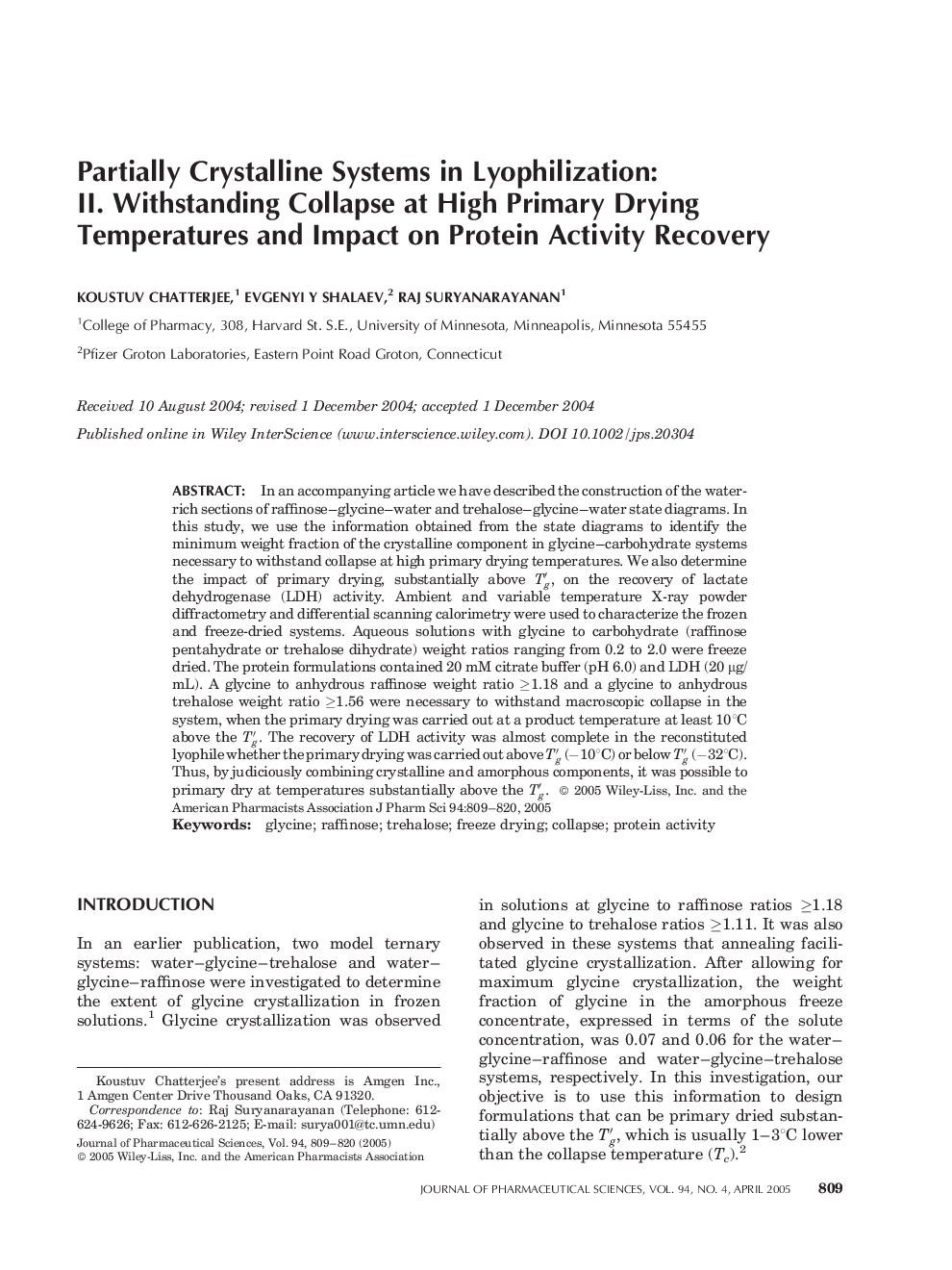| Article ID | Journal | Published Year | Pages | File Type |
|---|---|---|---|---|
| 8994957 | Journal of Pharmaceutical Sciences | 2005 | 12 Pages |
Abstract
In an accompanying article we have described the construction of the water-rich sections of raffinose-glycine-water and trehalose-glycine-water state diagrams. In this study, we use the information obtained from the state diagrams to identify the minimum weight fraction of the crystalline component in glycine-carbohydrate systems necessary to withstand collapse at high primary drying temperatures. We also determine the impact of primary drying, substantially above Tgâ², on the recovery of lactate dehydrogenase (LDH) activity. Ambient and variable temperature X-ray powder diffractometry and differential scanning calorimetry were used to characterize the frozen and freeze-dried systems. Aqueous solutions with glycine to carbohydrate (raffinose pentahydrate or trehalose dihydrate) weight ratios ranging from 0.2 to 2.0 were freeze dried. The protein formulations contained 20 mM citrate buffer (pH 6.0) and LDH (20 μg/mL). A glycine to anhydrous raffinose weight ratio â¥1.18 and a glycine to anhydrous trehalose weight ratio â¥1.56 were necessary to withstand macroscopic collapse in the system, when the primary drying was carried out at a product temperature at least 10°C above the Tgâ². The recovery of LDH activity was almost complete in the reconstituted lyophile whether the primary drying was carried out above Tgâ² (â10°C) or below Tgâ² (â32°C). Thus, by judiciously combining crystalline and amorphous components, it was possible to primary dry at temperatures substantially above the Tgâ².
Related Topics
Health Sciences
Pharmacology, Toxicology and Pharmaceutical Science
Drug Discovery
Authors
Koustuv Chatterjee, Evgenyi Y Shalaev, Raj Suryanarayanan,
